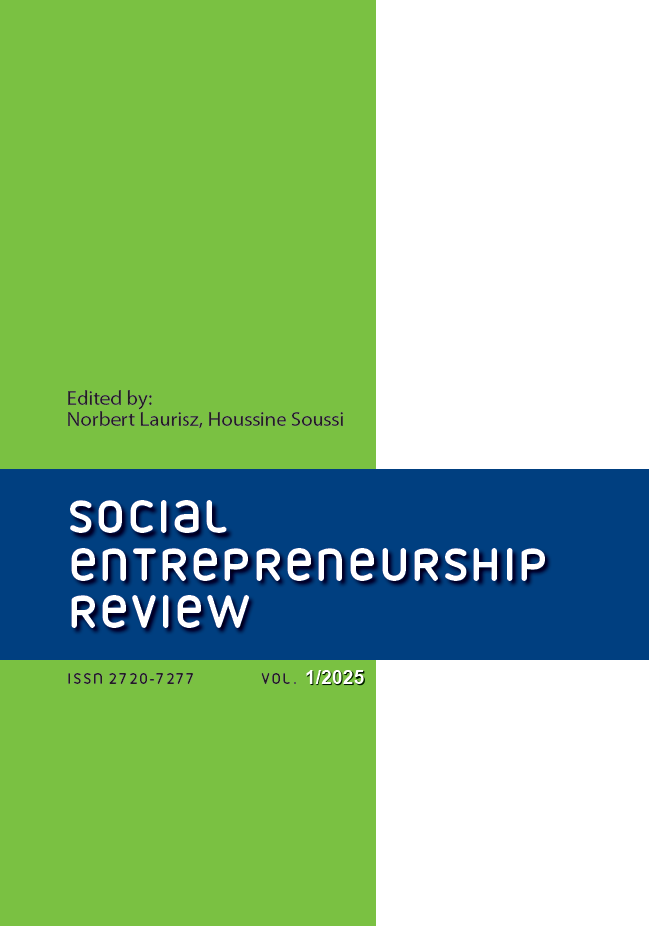Measuring the social impact: An example of Slawek Foundation
DOI:
https://doi.org/10.15678/ES.2018.1.02Keywords:
social value, logic model, theory of change, SROIAbstract
The article is aimed at presenting the most commonly used existing methods of measuring the social impact generated by a social enterprise using an example, a case study of Slawek Foundation. The Foundation serves the prisoners, ex-prisoners and their families with a goal of bringing them back to the society, so that they were able to return to life and live under the rule of law. The article is composed of a brief description of social value, social impact categories and the most commonly used methods of measuring the social value: the logic model (theory of change) and SROI, and next it shows a case study use of those methods for Slawek Foundation.
Downloads
References
Arvidson M., Lyon F., McKay S., Moro D. (2010). The ambitions and challenges of SROI. Working Paper nr 49. Birmingham: TSRC, http://eprints.mdx.ac.uk/7104/1/The_ambitions_and_challenges_of_SROI.pdf (dostęp: 20.03.2018).
Edens G., Lall S. (2014). The State of Measurement Practice in the SGB Sector. Aspen Network of Development Entrepreneurs, https://www.aspeninstitute.org/publications/state-measurement-practice-sgbsector (dostęp: 05.09.2017).
Gripper R., Kazimirski A., Kenley A., McLeod R., Weston A. (2017). Global innovations in measurement and evaluation. London: New Philanthropy Capital, https://www.thinknpc.org/wp-content/uploads/2018/07/Global-Innovations-in-Measurement-Final-Interactive.pdf (dostęp: 20.03.2018).
Guthrie K., Louie J., David T., Foster C.C. (2005). The Challenge of Assessing Policy and Advocacy Activities: Strategies for a Prospective Evaluation Approach. Los Angeles: The California Endowment, http://www.theoryofchange.org/wp-content/uploads/toco_library/pdf/2005_-_Guthrie_-_The_challenge_of_assessing_policy_advocacy.pdf (dostęp: 20.03.2018).
IMWG (2014). Measuring Impact: Subject paper of the Impact Measurement Working Group. The Impact Measurement Working Group of the Social Impact Investment Taskforce, https://www.thinknpc.org/wp-content/uploads/2018/07/IMWG_Measuring-Impact1.pdf.
Kim M. (2015). Rethinking the Impact Spectrum. April 30, http://ashokau.org/blog/rethinking-the-impactspectrum/ (dostęp: 22.08.2017).
Nicholls J., Lawlor E., Neitzert E., Goodspeed T. (2012). A guide to social return on investment. Lothian: The SROI Network.
Olejniczak K. (2014). „Reguła 3E jako podstawa zarządzania współczesnym przedsiębiorstwem”, Studia Ekonomiczne. Zeszyty Naukowe Uniwersytetu Ekonomicznego w Katowicach, nr 180, cz. 2, s. 208–216.
Oramus M. (2011). „Przydatność metody Social Return on Investment dla małych podmiotów ekonomii społecznej. Studium przypadku fundacji Ale heca!”, Ekonomia Społeczna, nr 2, s. 61–74.
Peersman G. (2014). „Overview: Data Collection and Analysis Methods in Impact Evaluation”, Methodological Briefs: Impact Evaluation 10, Florence: UNICEF Office of Research.
Perek-Białas J., Worek B. (2007). „Ewaluacja interwencji społecznych”, w: J. Hausner (red.), Zarządzanie podmiotami ekonomii społecznej, skrypt 2 (s. 151–171). Kraków: Małopolska Szkoła Administracji Publicznej Uniwersytetu Ekonomicznego w Krakowie, http://www.msap.uek.krakow.pl/doki/publ/es_zarzadzanie.pdf (dostęp: 22.08.2017).
SRI (2014). Social Reporting Standard. Guide to results-based reporting. Mülheim an der Ruhr: Social Reporting Initiative e.V, http://www.social-reporting-standard.de/fileadmin/redaktion/downloads/SRS_guidelines_2014_EN.pdf.
Vogel V. (2012). Review of the use of ‘Theory of Change’ in international development. Review Report. UK Department of International Development, http://www.theoryofchange.org/wp-content/uploads/toco_library/pdf/DFID_ToC_Review_VogelV7.pdf (dostęp: 20.03.2018).






